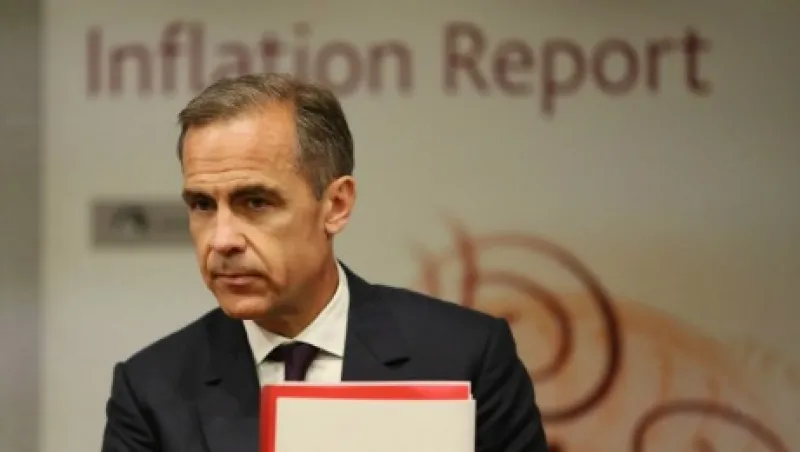Bank of England governor Mark Carney announced today that the bank will keep benchmark lending rates at historic lows while releasing voting results from the committee meeting and the bank’s quarterly inflation report. The shift to release the economic indicators on a single day, dubbed “super Thursday” by pundits, is intended to allow policymakers to provide greater transparency regarding their reasoning. Despite mounting criticism within parliament and among some investors, Carney and his colleagues appear to continue to see a lack of price pressure on weaker fuel costs and threats of Grexit and Brexit trumping concerns over potential financial asset inflation.
Greece remains defiant. A meeting in Brussels between Greek Prime Minister Alexis Tsipras, European Commission President Jean-Claude Juncker and Dutch Finance Minister and Eurogroup President Jeroen Dijsselbloem ending today, failed to result in an agreement that would prevent the Mediterranean nation from missing the payment due to the International Monetary Fund in the coming days.
GE divesture is cornucopia for investment bankers. Multiple media sources report today that General Electric Co. has engaged a number of Wall Street banks to advise on the sale of commercial lending divisions, with J.P. Morgan Chase, Deutsche Bank and Barclays among the leading dealmakers. Total assets and business units to be unloaded by the U.S. conglomerate may exceed $200 billion in valuation, as the company refocuses on nonfinancial operations.
AIG sells leasing unit. Yesterday insurer American International Group completed the sale of more than 86 million shares of Dutch aircraft leasing company AerCap Holdings, valued at $3.7 billion in an initial public offering. The resulting capital is earmarked for a share repurchase plan, announced earlier in the year.
Bond markets under water. Heavy selling this week has resulted in broad-based bond market indexes reaching negative year-to-date returns, as investor sentiment remains mixed. The Bank of America Merrill Lynch Global Broad Market Index, which represents $41 trillion in fixed-income assets, has declined nearly 0.5 percent for the year.
Portfolio Perspective: Why You Best Invest Like Value Legend Ben Graham Now — John Reese, Validea Capital Management
By many measures, such as the Shiller price-earnings ratio and Tobin’s q, the market looks expensive at these levels. The S&P 500 bottomed at 666 in March of 2009, and at its current level the market has increased over 215 percent. Given this impressive run in stocks, the length of this bull market and overall valuations, one has to wonder if stocks still offer solid return prospects going forward. While returns over the next five to seven years will most likely be lower than those of the past five years, I think investors can give themselves a good chance for excess market returns by following the strategies outlined by the investing greats.
Since 2003, I have been tracking portfolios on my research site using the fundamental stock selection methods of some of history’s best and most successful investors. One of those strategies is based on the writings of Ben Graham, known as the father of value investing and Warren Buffett’s mentor. The ten-stock, annual rebalanced Graham-inspired portfolio has returned 13.6 percent annually since July 15, 2003, compared to 6.5 percent for the market, excluding dividends). Graham’s “cigar-butt” value investing techniques still work today if deployed with consistency and rigor over long periods of time.
To be sure, these market valuations would most likely have been too rich for Graham’s blood. His prowess for buying companies that were underpriced compared with the real value of their businesses earned an average annualized gain of 20 percent between 1936 and 1956, compared to 12.2 percent annually for the S&P over the same time period.
Graham’s defensive investor strategy, as I have captured it quantitatively, calls for a P/E ratio, based on trailing three-year earnings, of less than 15. The price-to-book value must be low enough that multiplying the P/B by the P/E comes to less than 22. The probability of losses can be lowered by buying stocks that are already trading at a discount to their intrinsic value.
Earnings growth the trailing ten years have to be at least 30 percent, indicating the company performs consistently. The long-term debt must be lower than net current assets/working capital, or current assets minus current liabilities. A company’s debt-to-equity ratio also needs to be less than 100 percent.
A company’s assets, have to be at least two times its liabilities, for a current ratio of 2. The higher the current ratio, the less likely a company will have financial problems. But beware of companies whose high current ratio stems from troubles collecting payments.
John Reese is the founder and CEO of Validea Capital Management, a registered investment adviser in West Hartford, Connecticut.






